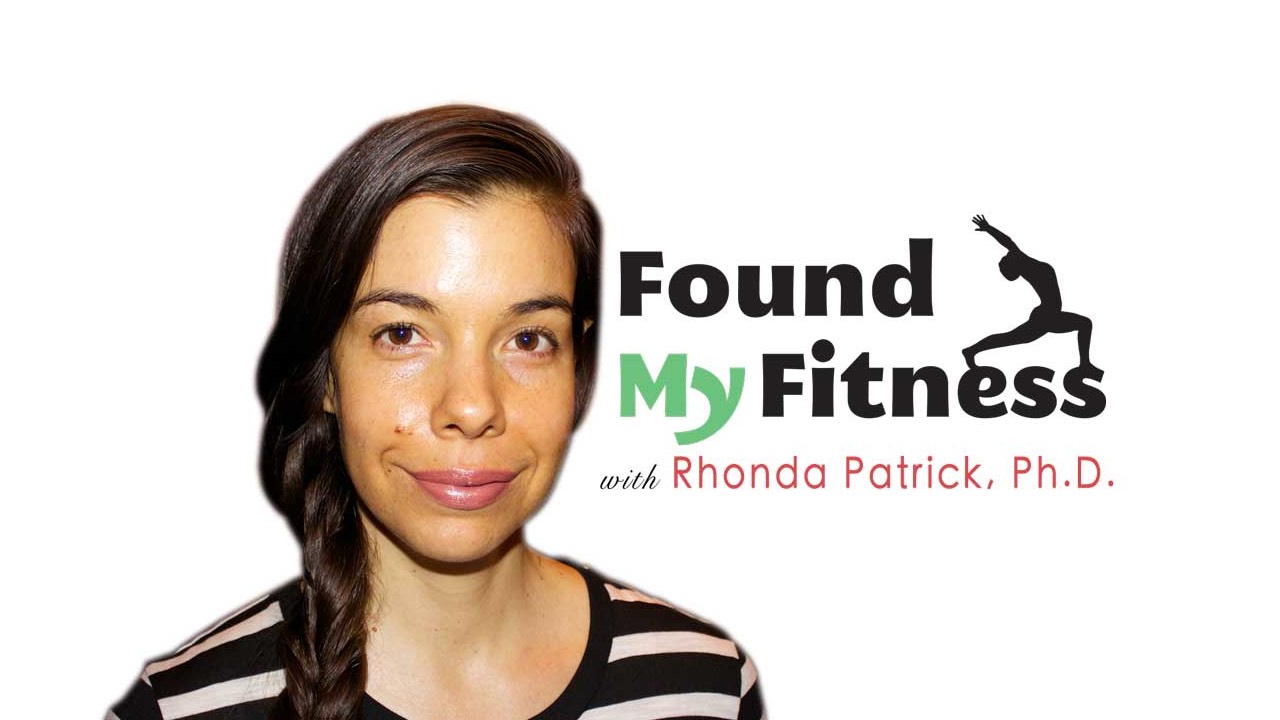Autophagy and cancer: a crucial role in immunosurveillance and chemotherapeutic treatment
Get the full length version of this episode as a podcast.
This episode will make a great companion for a long drive.
The BDNF Protocol Guide
An essential checklist for cognitive longevity — filled with specific exercise, heat stress, and omega-3 protocols for boosting BDNF. Enter your email, and we'll deliver it straight to your inbox.
Autophagy triggers cellular immunosurveillance mechanisms by facilitating the release of ATP from dying cells. ATP is perceived as a threat and attracts the attention of the immune system's myeloid cells via a special class of receptor known as purinergic receptors. Activation of this important system of immunosurveillance is a predictor of the long-term efficacy of chemotherapy and may help to explain the complex relationship of autophagy with cancer, wherein the initial suppression of autophagy may help prevent attracting undue attention from the immune system, but may later facilitate ongoing transformation. In this clip, Dr. Guido Kroemer explains the complex relationship that exists between cancer cells, the immune system, and autophagy.
- Rhonda: Okay. So what about the fact that some cancer cells do activate autophagy?
- Dr. Kroemer: So one relatively general mechanism may be that early during oncogenesis, the deletion of tumor suppressor genes or the activation of oncogenes leads to autophagy suppression. So there are several examples for this. And it is part of the process that leads to cellular transformation, because autophagy is a homeostatic mechanism that, if inhibited, favors genomic instability and malignant transformation of the cells. So there are examples on the literature also that direct inhibition of autophagy is sufficient to cause oncogenesis, in particular, in the context of leukemia. And so, later on, when the cells strive and adapt to an ever more hostile microenvironment, hostile because there's too little vascularization for the expanding cancer cells, so initially there are hypoxic areas, there's no normal tissue architecture, so the cells are usually undernourished. The doctor may apply some chemotherapeutic agent which is an additional stress. So there are internal and external stress pathways that the cell has to cope with. And it is an advantage for the cancer cells to reactivate the autophagic process. And so, it has been proposed that inhibition of autophagy would be a way to make the cancer cells more fragile and vulnerable to therapeutic intervention by chemotherapy, radiotherapy, targeted therapies. The problem is that nothing is simple in oncology and that cancer is not just a cell-autonomous disease. It is more. It is not just that one cell has become wild and has been accumulating genetic and epigenetic changes that make it selfish. No, a cancer cell will only survive if it escapes from immuno-surveillance. So the immune system, fortunately for us, is usually very efficient in eliminating aberrant cells, premalignant cells, and the initial cancer cells. And actually, the inhibition of autophagy that occurs during early oncogenesis maybe also a way for the cancer cells to hide from the immune system. And so, it is complex. It's immunology, multiple different players come into action. Autophagy, for instance, is required for stressed cells to release ATP into the microenvironment. You know, of course, ATP is the most important, energy-rich metabolite in the cell. It's like the equivalent of the dollar for bioenergy clinics in the economy. And ATP, when it appears all of a sudden outside of the cell, is considered as non-physiological. It is a dangerous signal. It is perceived by so-called purinergic receptors that are present, among other cell types, on leukocytes, and particularly myeloid cells. And a cell that undergoes autophagy may, especially, when this occurs before cell death, release ATP to attract myeloid cells into its proximity and to start an immune response against tumor antigens in the context of the initial oncogenic events. And so, autophagy is required for some steps of the immunosurveillance process. And it is exactly this process that makes cancer therapies efficient. So, in contrast to the official dogma that has been en vogue for several decades, chemotherapy is not just killing the cancer cells as if we used an antibiotic that specifically paralyzes the metabolism of bacteria. No. It is true that chemotherapy induces cancer cell death, but the important point is that chemotherapy must provoke this cell death in a way that it later leads to an immune response. And so, if you have a long-term effect of chemotherapy, for years or decades, that continues beyond removal of the drug, it is due to an anti-cancer immune response. And so, since this is so important, the capacity of the chemotherapeutic agent to induce autophagy is actually required for the long-term efficacy of the treatment.
- Rhonda: I did not know that. I had no idea that the induction of autophagy would stimulate the immune system through this extracellular ATP mechanism.
An energy-carrying molecule present in all cells. ATP fuels cellular processes, including biosynthetic reactions, motility, and cell division by transferring one or more of its phosphate groups to another molecule (a process called phosphorylation).
An intracellular degradation system involved in the disassembly and recycling of unnecessary or dysfunctional cellular components. Autophagy participates in cell death, a process known as autophagic dell death. Prolonged fasting is a robust initiator of autophagy and may help protect against cancer and even aging by reducing the burden of abnormal cells.
The relationship between autophagy and cancer is complex, however. Autophagy may prevent the survival of pre-malignant cells, but can also be hijacked as a malignant adaptation by cancer, providing a useful means to scavenge resources needed for further growth.
An organism’s ability to maintain its internal environment within defined limits that allow it to survive. Homeostasis involves self-regulating processes that return critical bodily systems to a particular “set point” within a narrow range of operation, consistent with the organism’s survival.
A type of white blood cell. Leukocytes are involved in protecting the body against foreign substances, microbes, and infectious diseases. They are produced or stored in various locations throughout the body, including the thymus, spleen, lymph nodes, and bone marrow, and comprise approximately 1 percent of the total blood volume in a healthy adult. Leukocytes are distinguished from other blood cells by the fact that they retain their nuclei. A cycle of prolonged fasting has been shown in animal research to reduce the number of white blood cells by nearly one-third, a phenomenon that is then fully reversed after refeeding.[1]
- ^ Cheng CW; Adams GB; Perin L; Wei M; Zhou X; Lam BS, et al. (2014). Prolonged fasting reduces IGF-1/PKA to promote hematopoietic-stem-cell-based regeneration and reverse immunosuppression. Cell Stem Cell 14, 6.
The thousands of biochemical processes that run all of the various cellular processes that produce energy. Since energy generation is so fundamental to all other processes, in some cases the word metabolism may refer more broadly to the sum of all chemical reactions in the cell.
A gene that has the potential to cause cancer. A proto-oncogene is a normal gene that regulates cell growth and proliferation but if it acquires a mutation that keeps it active all the time it can become an oncogene that allows cancer cells to survive when they otherwise would have died.
An oncogene is a mutated form of a gene ordinarily involved in the otherwise healthy regulation of normal cell growth and differentiation. Activation of an oncogene, through mutation of a proto-oncogene, promotes tumor growth. Mutations in genes that become oncogenes can be inherited or caused by environmental exposure to carcinogens. Some of the most common genes mutated in cancer are the IGF-1 receptor and its two main downstream signaling proteins: Ras and Akt.
The purinergic receptors, also known as purinoceptors, are divided into two major families: the P1, or adenosine, receptors and P2 receptors, which bind ATP and/or UTP. In the 1970s, adenosine was found to stimulate cAMP formation in brain slices. Subsequently, physiological effects of adenosine on almost all tissues have been described. These receptors have been implicated in learning and memory, locomotor and feeding behavior, and sleep. More specifically, they are involved in several cellular functions, including proliferation and migration of neural stem cells, vascular reactivity, apoptosis and cytokine secretion.
Genes that suppress cell division or growth. Tumor suppressor genes encode proteins involved in aspects of cell growth regulation such as cell cycle arrest and apoptosis. Loss of tumor suppressor gene function promotes uncontrolled cell division and growth, which are hallmarks of cancer.
Member only extras:
Learn more about the advantages of a premium membership by clicking below.
Attend Monthly Q&As with Rhonda
Support our work

The FoundMyFitness Q&A happens monthly for premium members. Attend live or listen in our exclusive member-only podcast The Aliquot.





































